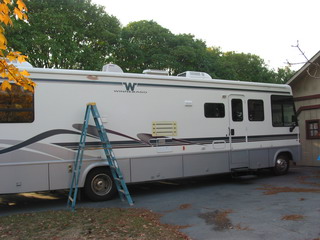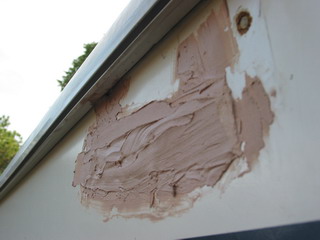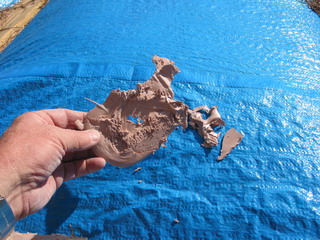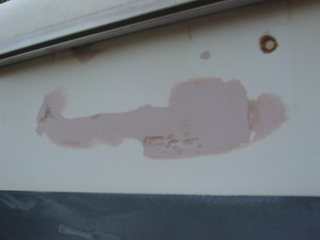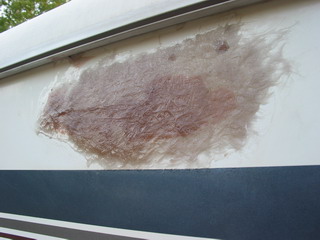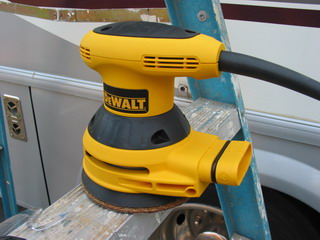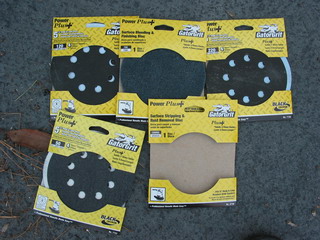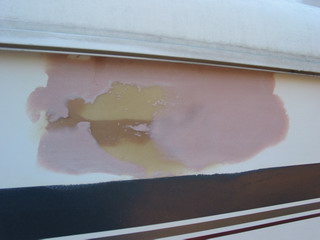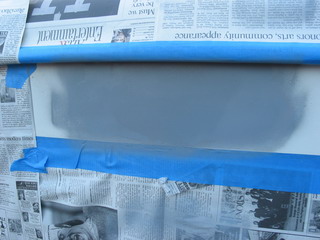 |
lots of cool stuff | ||||
| JUST FOR THE FUN OF IT | |||||
| About Us | Contact Us | ||||
|
How to Repair a Hole in the Side of a Camper or MotorhomeObject: To repair without using a body shop and saving hundreds, if not thousands of dollars by doing it yourself – for under $30.
The tree or rock hit the awning on the side of the motorhome and forced the upright support to dig into the side of the motorhome, thus ripping a gapping home in the side about 2 inches wide and 10 inches long. The side wall of this motorhome is fiberglass instead of aluminum, so these instructions are for a repair on this type of “hard” walled vehicle. First of all, take a small knife (I used my pocket knife) and clean away the loose and broken pieces of fiberglass and wood. Be sure to keep a small piece of the broken fiberglass sidewall for later use. The side wall of this type of motorhome is made up of a sandwich of fiberglass over what appears to be a thin sheet of luan plywood, then a layer of Styrofoam, followed by the inside wall paneling. Next, if the Styrofoam is damaged or gouged out, get a can of expandable foam insulation from a hardware store and squirt some into the opening. Be very careful not to overfill the opening since this foam greatly expands while curing. This will fill in any gaps in the Styrofoam caused by the gouging.
Now is the time to apply fiberglass. From an auto parts house, obtain a small fiberglass repair kit. It should contain some fiberglass cloth, a container of resin and a tube of hardener. The resin and hardener should be mixed according to the instructions on the can.
The next day use your sander to sand down the fiberglass and get it as smooth and flat as you can. You might be able to use hand-powered sanding blocks, but a power sander will work better and be easier. After this is finished, mix a final batch of body filler and thinly apply it over the fiberglass, smoothing it out as best you can and leaving only a thin coat over the fiberglass.
After this has hardened and cured, it will require sanding with progressively finer sandpaper to blend it down to the original undamaged sidewalls while getting the surface as smooth as glass.
Finally, take the small piece of damaged sidewall fiberglass you saved in the first step and take it to an auto parts store and try to match the color to a small aerosol can of auto paint. Use that paint to spray the repaired area, trying to match to the surrounding undamaged paint. If you cannot find an exact match, ask the shop clerk about other options for spraying. .
|
